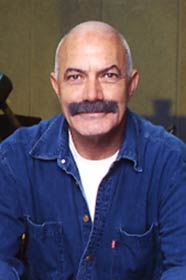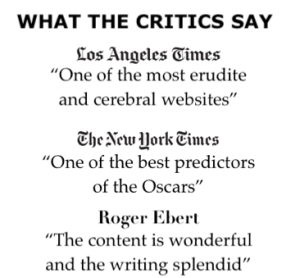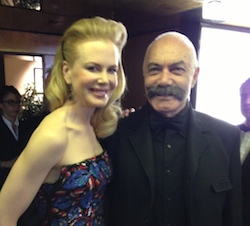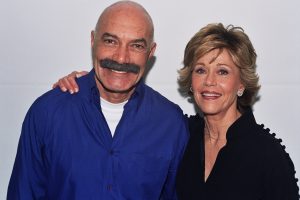James Cameron: ‘Avatar 2’ ReRelease, Why AI ‘Is Never Going to Replace Humans: ‘We Need Our Artists

“We’re going through the finish of the VFX now on third film in the series, Avatar: Fire and Ash, Oscar winner James Cameron says “we have been for the last two years, but we’re really coming down to the wire now. I want to be thematically consistent about the way music was used and underscore during dialogue scenes.”
Audiences will be able to rewatch “The Way of Water” on the big screen on October 3, when the film, which grossed $2.3 billion worldwide, is re-released
The former film traces the family saga of Jake Sully (Sam Worthington) and Neytiri (Zoe Saldaña) after the events of 2009’s “Avatar,” when they defeated the military assault on the Na’vi by Col. Miles Quaritch (Stephen Lang).
In the sequel, set 16 years later, Jake and Neytiri have a clan of five children, including an adopted daughter, Kiri (Sigourney Weaver), born from the inert Na’vi avatar of Weaver’s deceased human character from the 2009 film, Dr. Grace Augustine, and a quasi-adopted human son, Spider (Jack Champion), who was orphaned when his biological parents, including Quaritch, died in battle.
Quaritch is resurrected in “The Way of Water” into his own Na’vi avatar, and he resumes his pursuit of the Sully family, which puts Spider in conflict.
In an interview, Cameron discussed the major changes he made to “Fire and Ash” after he’d finished filming, the future of the “Avatar” franchise.
Disney has fourth and fifth Avatar films dated for 2029 and 2031.
Rewatching your own films?
Cameron: You realize how much of filmmaking is subconscious and can’t be quantified. My job is to quantify minutia. I’m looking at a VFX shot: “OK, you see the way his foot comes down on that one fern and the way it brushes aside. I’m not quite buying that. I think you should re-sim that.” I mean, it’s endless. It’s every detail, every blade of grass, every flicker of fire, all of the lighting interactions.
You get so down into the weeds that it takes stepping back and seeing the film to realize that there’s a big unconscious driver that’s running underneath all of that detail that’s telling you when you’ve got the essence of the moment. When I see the film, I go, “Oh, that actually works. I actually feel what I’m supposed to be feeling.” I guess what I see after the fact is, I get sucked down the rabbit hole of the details, but I don’t sacrifice the essence.
VFX Process
I’m working with the VFX people, trying to create a new culture around that– not a technical culture, but a creative culture. When I’m talking to the effects sequence supervisors, it’s like, “What is the most important thing about the shot and why? What is its narrative purpose? What are we saying with this shot? Don’t think in shots. Think in flow. Why does this shot exist? I could have done a completely different shot. Why do you think I did that shot?
Goals:
I want them to internalize for themselves that storytelling process. They go way down the rabbit hole, much deeper than me, on the technical side, and are more capable technically than I am. So I want to give them a little bit of that storytelling magic dust to own for themselves. And it’s working. It started on “The Way of Water,” and it’s continued a lot more on “Fire and Ash.” It’s what I call first look final. It’s the craziest thing in the world. The creative culture is so strong across all these artists that I can look at a shot for review for the very first time and say “It’s done.”
It’s actually become a kind of crazily joyful finish. It was a fraught production, let’s face it, but it’s been a kind of a joyful finish, because it’s really starting to resonate and fire on all cylinders, and we’re getting lots of first look finals, which is nuts.
It creates this weird cognitive dissonance, where I’m always shocked by how long it’s been since we actually captured the moment. Because there’s a sense of immediacy. I’m in the story, working on this scene. It feels very immediate. I can remember where everybody was standing, even secondary characters in the background, which of our troop characters played each one of those secondary characters. It feels like I did it last week, but it was six years ago.

I got a big scoop here. It didn’t exist in “Fire and Ash.” And I went, “Oh, he’s got to go get the bird.” Come on! I was saving it for a later film. I was like, “Fuck that! He should get the bird. Get the Toruk.” There’s something in Jake’s destiny that requires it, right? So I just re-wrote it, and we went back and we shot two or three scenes around that concept, and I threw some stuff out and stuck that in. We’re at three hours, big surprise! But it works beautifully, and the actors were super-excited about that idea. It’s like, oh, okay, that feels right, you know?
New Characters
New characters, Spider, Kiri, Lo’ak, they all come to real fruition in movie 3. But the beautiful thing about this re-release is you get to remind yourself of how important all these relationships are, and then we pay them all off — sometimes for good, sometimes not so good. But the point is, they’re on a greater arc. Kiri’s arc, very important. Spider’s arc, I think you could tell from the trailer, we’re going places with him. He’s also the glue that glues all the other relationships together. Jake and Quaritch, they’d just be two guys trying to kill each other for six hours of two movies. Sorry, that’s boring. Where it gets nuanced is when they’ve got this kid between them, and they’re the two different father figures, and sometimes they have to work together to keep him alive. It becomes much more nuanced as a result of these younger characters. And by the way, if you’re a kid, you’re going follow them. It’s not a family movie about the parents. It’s a family movie about the kids.

“Ghosts of Hiroshima”
It was written by a friend of mine. I gave them permission to announce that I had bought it, but I haven’t written a script yet. So once I get a script I like, then I can answer that question, but that’s not the case right now. Now, I’ve got a couple of other things that haven’t been announced that I also want to do, and it’s a question of — that one [“Ghosts of Hiroshima”] I will direct. Doesn’t matter when I do it, I’ll direct that one. There are others that I may direct. And the big swing in all of this is, do we make any money with “Avatar 3”? We’ll make some money. But the question is, what kind of a profit margin is there?
There’s an argument for taking a pause and doing some smaller, more personal film in the meantime, while that gets figured out. There’s an argument, in wild success, for us just launching and just going straight into [“Avatar 4” and “Avatar 5”] and I figure out a production methodology where I have hiatus where I can make another film. And there’s another argument that says just go make those two damn movies and figure everything else out when I’m 80.
I’m at a crossroads here — it’s not all mapped out. Life isn’t like that. I’m going to see what draws me to what as I go forward. The only thing I can tell you, I’m not going to stop being a director and storyteller.
Sources: Variety, Hollywood Reporter










